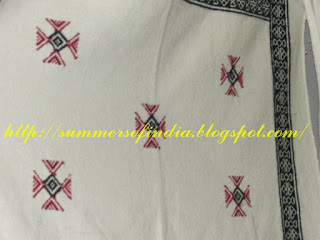I am busy with my mothers health check ups and her surgery. I just hate the visits to hospitals or doctors. I feel the facilities here are quite costly and for a common man its not affordable.
Though we have Government hospitals, where the doctors are well experienced and one of the finest, lack of equipment and other facilities along with the serpentine queues and unhygienic conditions are a real put off. Most of the poor, lower and middle class have no other option but to go there. We cannot blame the staff working in such hospitals for lacking service motive as they have their own problems, though this should not be an excuse for their rude behavior.
Then there are corporate hospitals.The facilities and the services are good but the cost is quite high. But who can take risk where health is concerned? So people like us are forced to somehow mange the finances and go for costly treatments selecting carefully the services vs cost as per our budgets. But boy here too the queues are huge and they really test our patience.
One of the most irritating things is that, no one ever lifts the phones or simply keep them of the hook,no matter even if there are so many sitting idle at the reception desk. Even if by some very remote lucky chance they do lift it, they say there is no appointment just come register and wait. So me and my mom went by ten o'clock, registered and had to wait hour and half as there was a power cut and the generator was not working. I forgot to take along a book or my embroidery project with me in my hurry, so I was just watching others there. There were very old and invalid in wheel chairs, children, mothers with new born and so on. How difficult it was for them to wait for so long.
When the power came, there were a series of tests to be done initially, before referring to the experts. We were shuttled form one room to the other. We did not know what tests they are doing and why. We dare not ask because even before we can form the question, we are asked to go for next test. Even if we ask, they look down upon us as illiterates. No doubt they have to deal with so many people but is not a patient human? If the doctors talk to them and assure them , I feel the patient is half cured then and there. It gives them a hope a confidence to face the illness. But who is bothered or who has the time? Then again not all are like that. We do come across some caring persons who are very gentle and answer all our doubts patiently. If I come across such a doctor, I do make it a point to take time and thank him properly.
If one knows someone in those hospitals they manage to jump the queues and also get special treatment. Those who have been waiting in the queues have to just wait and watch helplessly. After all our tests finally when it came to expert opinion, the doctor was on leave that day. So what to do? Again visit the hospital on some other day.
Next day we visited another hospital. It took us the whole day for the checkups. we had to forgo our lunch and wait. Who wants to come another day and waste one more day? At the end of the day we returned home in the evening exhausted and hungry . My mother was also very tired by the end of it but she bore it well with a smile. If this is the case with me, think about the senior citizens, invalids and children who has to face this. What about those who are working and who are not given leave so often?
Any way friends I may not be able to post during the coming week. I have so much to share with you. But I am so tensed up and my mind refuses to relax . I just want to make sure everything goes well .Still I will try....Please bear with me...Keep watching




































